Skype: neodalle-travel
Tel: +86 135 7447 2266
E-mail: sales@zhangjiajieholiday.com
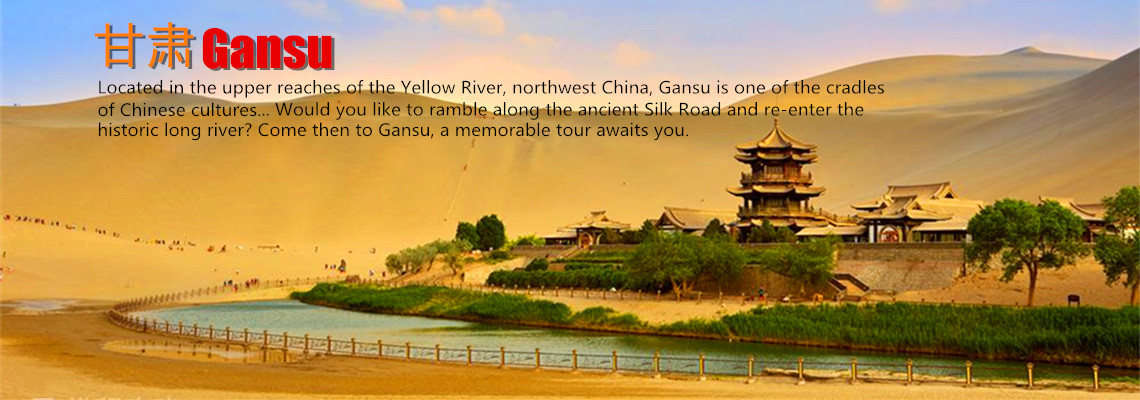
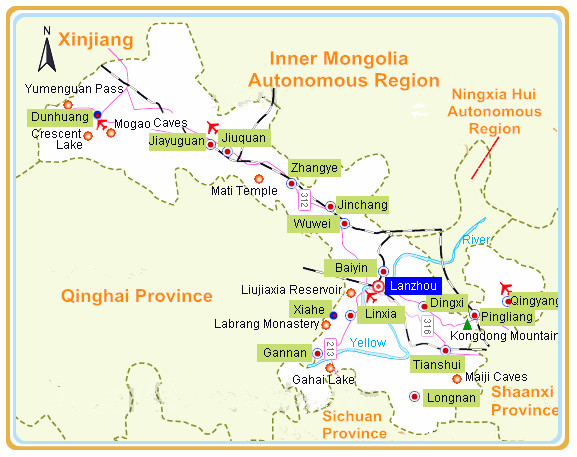 lower reaches of Yellow River, Qingyang’s topography is typically Loess Plateau ravine. It is called Longdong and enjoys the name “Longdong Barn."
lower reaches of Yellow River, Qingyang’s topography is typically Loess Plateau ravine. It is called Longdong and enjoys the name “Longdong Barn."History of Qingyang
Qingyang has an extremely long history. The first paleolith was discovered in Huachi County of the city. The Western Zhou Dynasty (11th century BC to 771 BC) developed and grew in Qingyang and then moved southward. It was during the Qin Dynasty (221BC-206BC) that shires and prefectures began to be set up in this region.
What to see in Qingyang?
There are ravines crisscrossing and undulating hills all over Qingyang City. It belongs to the Loess Plateau area and mainly consists of three regions: low mountainous and hilly areas in the east, high mountainous and hilly areas in the north and gully areas in the south-central. The terrain is high in the north, west and east as well as being low in the south and center, forming a basin in eastern Gansu.
Qingyang is the one of the cradles of early agricultural civilization of the Chinese nation where the people lived and multiplied 200,000 years ago.The area has rich cultural and historical assets: Zhou’s Ancestral Tombs, Gongliu Worshiping Site, the Highway from the Qin Dynasty, North Grotto Temple, The Ancient Burial Complex, The Ancient Fortress, Beacon Fire Towers,etc. Here lists top attractions in Qingyang.
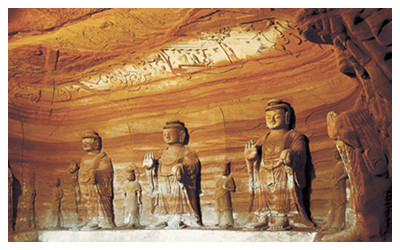 |
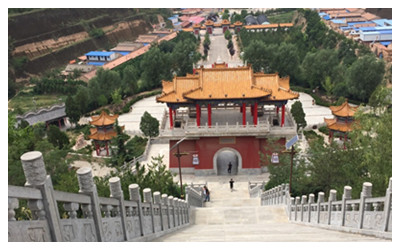 |
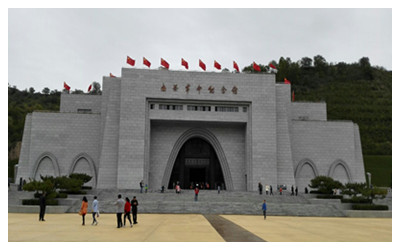 |
| North Grotto Temple | Zhou’s Ancestral Tombs Park | Nanliang Revolutionary Memorial Hall |
The local agricultural culture, folklore culture, and the Aboriginal Loess Culture are acclaimed by experts as “The miniature of Cathay culture, the Crystallization of ethnic culture and the earliest graphic arts". They are also valuable resources for tourism development: embroidery, paper-cut, shadow figures shows, and Daoqing opera.
When to visit Qingyang?
Enjoying a continental monsoon climate, Qingyang features little rain with more evaporation along with low humidity. The rainfall is mainly concentrated around July to September. Its annual average temperature maintains between 7 C and 10
C and 10 C (44.6
C (44.6 F and 50
F and 50 F).
F).
When to Go: Summer and autumn are the most favorable seasons to travel in Qingyang.
How to get to Qingyang?
Qingyang Airport lies 8 kilometers (5 miles) northwest of Xifeng District, operating flights to and from Lanzhou Zhongchuan Airport, Xi'an Xianyang International Airport and Tianjin Binhai Airport. The bus is the most important means of transportation in Qingyang. The east and west bus stations are located in Changqing Lu and Jiulong Lu.
Qingyang Travel Tips
Useful Telephone Numbers:
Tourist Complaints: 0934-8212126
Weather Forecast: 121
Zip Code Inquiry: 184
Bank of China Branch: No.66, Xi Da Jie, Xifeng District
China Post Branch: No.66, Xi Da Jie, Xifeng District
Special Local Products: buckwheat, sun-cured tobacco, white melon seed, walnut, acid jujube, Chinese pear-leafed crabapple, apricot, embroidery sachet, shadow puppetry.
 Ask Questions ?
Ask Questions ?